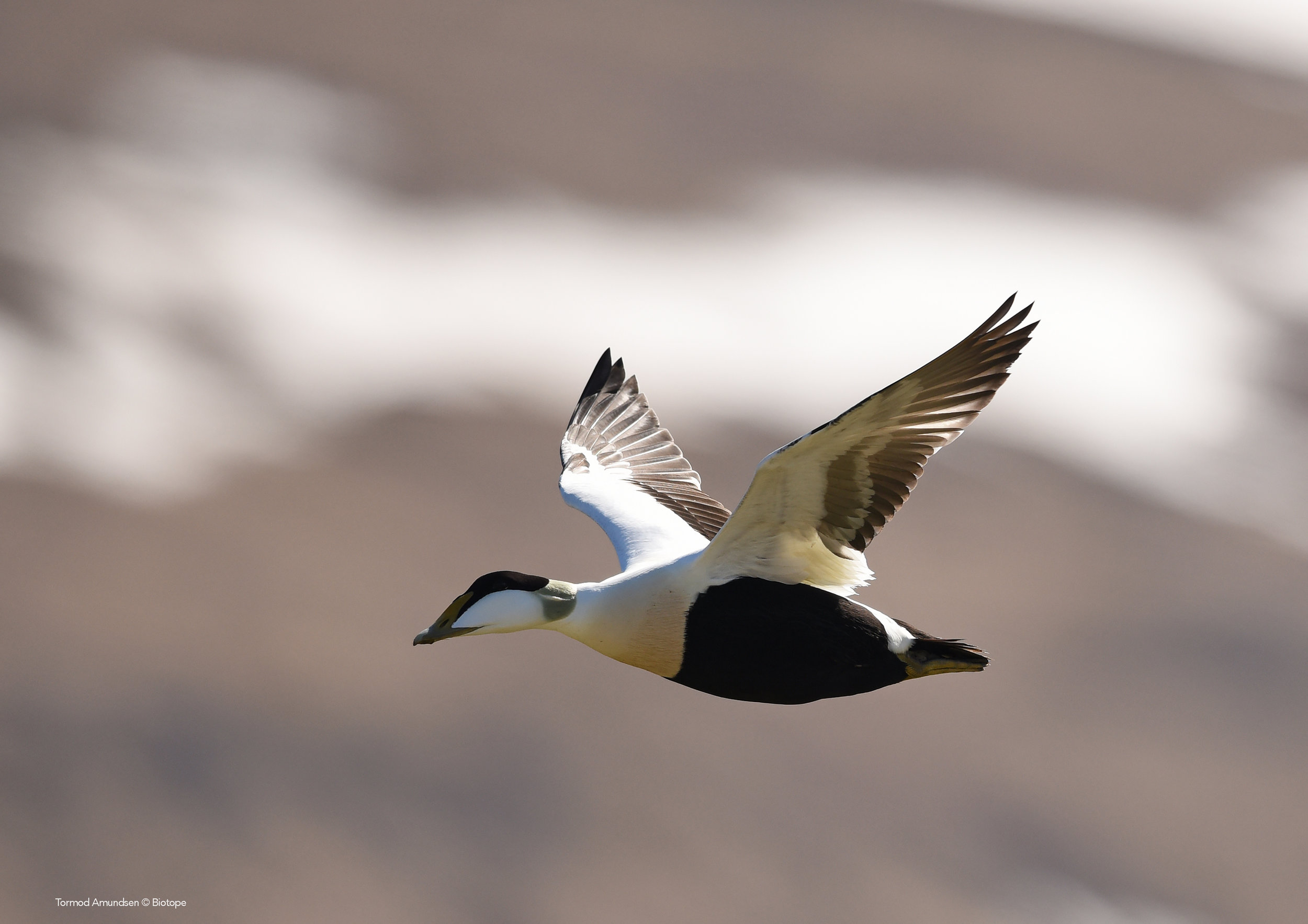The first stop at Þistilfjörður might be at Rauðanes. Drive the road down towards the parking lot and walk from there for 30 minutes on marked trail to the tip of the peninsula were you would get in good views of Puffins in beautiful surroundings. When you drive into the farming area of Þistilfjörður you will soon see a small lake at the farm Sævarland. It is generally worthwhile putting up your telescope to see if there is anything of interest on the lake or its surroundings. Other areas of interest while driving towards the town of Þórshöfn include the various rivers the road crosses.
At Þórshöfn, check the harbour area for scarce gulls, including possible Iceland Gulls. A walk through the well vegetated streets in town might flush up a vagrant passerine. Just north of Þórshöfn is a lake on the coastal side of the road called Syðra Lón (27). Scan the lake from the road as the surrounding area is a protected Common Eider colony. Drive on towards Langanes Peninsula. After passing the old houses at the farm Sauðanes you will see a long stretch of fairly narrow lake called Sauðaneslón (28). Birdwatchers should spend a good while near Sauðaneslón as unusual birds tend to stop there, including King Eider, Steller’s Eider etc. Pay particular attention to the area surrounding a little bridge over the river where waders flock in spring and late summer.
Continuing further along Langanes you can stop at the small birdwatching hide at Lambanes, clearly visible from the road. You should be able to get close to waders there. Also take a look at the small lakes you pass before you reach the deserted farm of Heiðarhöfn (29). Many waders flock on the shoreline in spring and autumn, including good numbers of Red Knot and Sanderling. Also look at the wetlands east of the farm. There should be a good chance of vagrant birds among the more common migrants at Heiðarhöfn, although this site is only rarely visited by birders. From Heiðarhöfn it is about 16 km to the bird cliffs at Skoruvíkurbjarg (30). Skoruvíkurbjarg is one of the very best sites in Iceland to see auks at close range, including the scarce Brünnich’s Guillemot. If you drive carefully you should be able to reach Skoruvíkurbjarg in a good 2WD vehicle, but 4WD cars are recommended. This place is wonderful for bird photography because you can get so close to the auks. Again, bear in mind that the auks leave the breeding grounds in early August. There is a nice colony of Northern Gannets on a large rock out at sea close to the cliffs called Stóri Karl and the birds are easily photographed from land Some of the Gannets are even nesting on the mainland. The Gannets are on the breeding grounds from March into early October. If you want further encounter with the auks, continue carefully to Fontur at the tip of Langanes. Lie down on your stomach to get excellent close views to the auks. From Fontur there is only one way to go: back to Þórshöfn.
For a different route back to Mývatn, or if you are heading towards the East fjords, take a left just as you leave Þórshöfn. Road 85 through Langanesströnd at Bakkaflói often lies close to the sea where it is a good idea to scan the flocks of Common Eider in search of King Eider. Also look for Northern Wheatear and Snow Bunting along this road. In May, Common Scoters flock at sea in the bay of Miðfjörður. A nice place for watching seabirds is at the small cliffs at Stapi. At the small town of Bakkafjörður there is a colony of Arctic Terns. When driving towards Vopnafjörður, make sure you scan Skógalón and Nýpslón (31) just north of the town of Vopnafjörður. These places contain mudflats that are scarce in Northeast Iceland and can be full of waders and ducks. Unfortunately these mudflats are only rarely visited by birders and therefore not much is known of the sites’ birdwatching potential. A good telescope is a must at these sites. Before leaving the Vopnafjörður area, search the harbour area in the town for interesting gulls. Iceland Gull should be possible here.






